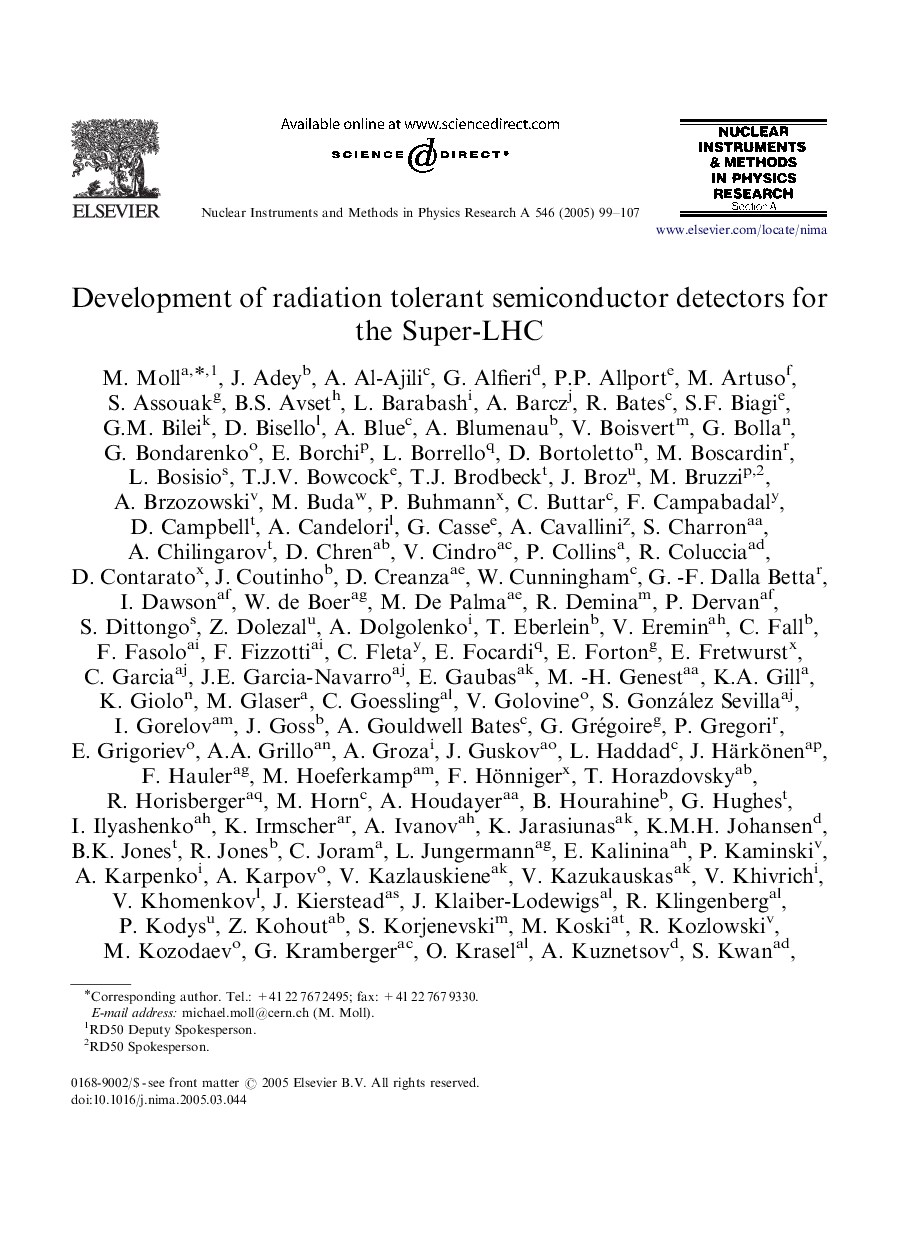| Article ID | Journal | Published Year | Pages | File Type |
|---|---|---|---|---|
| 9845335 | Nuclear Instruments and Methods in Physics Research Section A: Accelerators, Spectrometers, Detectors and Associated Equipment | 2005 | 9 Pages |
Abstract
The envisaged upgrade of the Large Hadron Collider (LHC) at CERN towards the Super-LHC (SLHC) with a 10 times increased luminosity of 1035Â cmâ2Â sâ1 will present severe challenges for the tracking detectors of the SLHC experiments. Unprecedented high radiation levels and track densities and a reduced bunch crossing time in the order of 10Â ns as well as the need for cost effective detectors have called for an intensive R&D program. The CERN RD50 collaboration “Development of Radiation Hard Semiconductor Devices for Very High Luminosity Colliders” is working on the development of semiconductor sensors matching the requirements of the SLHC. Sensors based on defect engineered silicon like Czochralski, epitaxial and oxygen enriched silicon have been developed. With 3D, Semi-3D and thin detectors new detector concepts have been evaluated and a study on the use of standard and oxygen enriched p-type silicon detectors revealed a promising approach for radiation tolerant cost effective devices. These and other most recent advancements of the RD50 collaboration are presented.
Keywords
Related Topics
Physical Sciences and Engineering
Physics and Astronomy
Instrumentation
Authors
M. Moll, J. Adey, A. Al-Ajili, G. Alfieri, P.P. Allport, M. Artuso, S. Assouak, B.S. Avset, L. Barabash, A. Barcz, R. Bates, S.F. Biagi, G.M. Bilei, D. Bisello, A. Blue, A. Blumenau, V. Boisvert, G. Bolla, N. Zorzi,
